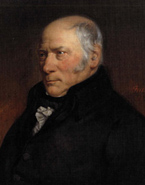Why Do We Need Paleontology?
March 24, 2011

Paleontology has been a central part of geology since British scientist William Smith first showed that geological strata could be identified based on the fossils they contained. Because they change through time, fossils put a date stamp on a particular layer of Earth in which they occur.
“We are the time keepers for the Earth sciences,” says Tim Rowe, professor and director of the university’s Vertebrate Paleontology Laboratory (VPL).
In the early days, paleontology was used to make geologic maps showing the ages of rocks at the surface. The maps made it easier to locate valuable mineral deposits such as gold, copper, coal, and oil. Fossils still provide useful information in the search for natural resources.
Fossils also helped shift our view of the age of Earth and of life itself from thousands of years to thousands of millions of years. They showed us that the story of our world wasn’t short and static, but rather a grand saga full of change, catastrophe, and surprise.
Paleontological dating continues to be an important tool. There are all sorts of scientific questions about earth processes that can only be answered through an understanding of when things happened. When did this earthquake happen? When did these continents start to break apart? When did this ice sheet completely disappear? When did half the plants and animals on the planet die off? There are tools to date geological layers based on the decay of radioactive isotopes, but these don’t work well in sedimentary rocks. Luckily those are places that tend to preserve fossils well.
“Paleontology remains the best way to get age control on your sedimentary rocks,” says Chris Bell, professor in the Jackson School. In recent decades, the use of paleontology in the earth sciences has expanded to include reconstructing past climates and environments, with the benefit of better understanding how they might change in the future. Fred Taylor, senior research scientist at the Institute for Geophysics, and Terry Quinn, the Institute’s director, use fossil corals to determine past sea level.
While paleontology remains a central part of a modern earth sciences program, it also straddles the increasingly thin boundary with life sciences.
“Paleontology is essentially geobiology,” says Jim Sprinkle, professor. “It’s one of these interdisciplinary areas just like geophysics which is between geology and physics, or geochemistry which is between geology and chemistry.”
Even though molecular biology has made great strides in understanding the tree of life, DNA can only be analyzed reliably from the past few thousand years. Fossils remain an important tool for understanding how life evolved on this planet.
“What do you do with all of the extinct lineages?” asks Bell. “Most of everything that’s ever been alive is extinct. That’s the fossil record. Integrating the two is the challenge.”
Systematics, using fossils to work out the evolutionary history of groups, is a major focus of Bell, Rowe, Clarke, and Sprinkle. They are each working to fill in a different part of the tree of life. In the end, says Bell, studying the evolution of life is inherently interesting.
“Everybody should care about the history of life on Earth because we’re a part of that story,” he says. “People should care about it for that reason alone.”
by Marc Airhart
>>> Return to “Enduring Excellence”
For more information about the Jackson School contact J.B. Bird at jbird@jsg.utexas.edu, 512-232-9623.
